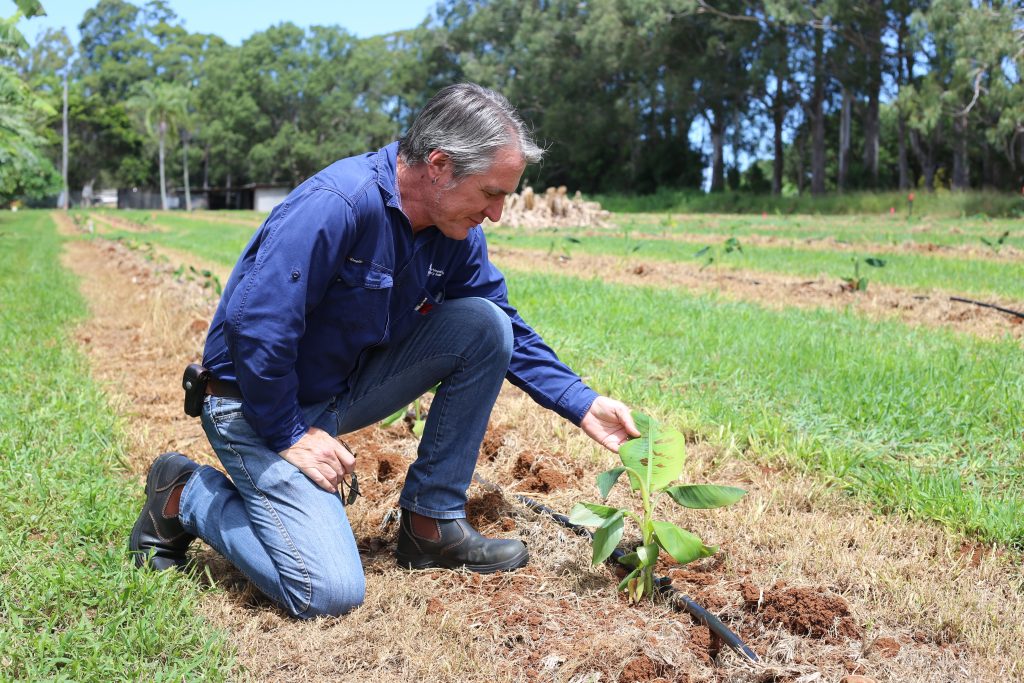
Nestled among rolling green hills, ocean views and million dollar homes is a patch of bananas that could hold the future of the Australian subtropical industry.
The NSW Department of Primary Industries (DPI) Duranbah trial site in northern New South Wales is one of a number around the country currently trialling different varieties of bananas for their resistance to a range of common diseases.
The project is a component of the Hort Innovation banana funded project BA16001, Improved Plant Protection for the Banana Industry, and follows on from the Banana Plant Protection Program project, reported in the previous edition of the Australian Bananas magazine.
The productive collaboration between Industry Development Officer Matt Weinert and David Peasley from Peasley Horticultural Services has continued at the picturesque site.
In a plot with a high level of Race 1 Fusarium—referred to as the ‘killing fields’—16 new varieties from around the world have been planted so researchers can observe how they perform.
It’s a multiple step process. Screening for Race 1 resistance is the first test at this site.
If the varieties are resistant, they are grown further to check other agronomic characteristics, like bunch weight, fruit size, cycling time and other pest and disease resistance or susceptibility.
If they perform well here they move into the semi-commercial or ‘best bet’ plantings.
Three varieties that have already been through this process and were selected in the Banana Plant Protection program have now progressed to that ‘best bet’ stage.
“We’ve established a double row, two metre offset planting and a single row, 2.5 metre spacing,” explained NSW DPI Banana Industry Development Officer Matt Weinert.
“The aim is to look at the effect these different densities have on plant growth and bunch and fruit size.”
“We want to see how they perform in these different plantings.”
The varieties being observed in this trial are:
- PKZ—produces a Cavendish-like fruit with very good leaf spot resistance, on a tall and robust plant. The fruit is shorter than Williams and the bunch is cylindrical, with all the fruit of similar size, so it should make it easier when it comes to packing;
- FLF—is Race 1 Fusarium resistant with good leaf spot resistance as well. It has large bunches and tastes like a Lady Finger; and
- FHIA17—a dual purpose plant with fruit that can be cooked when green or eaten as a dessert banana.
“We’ll grow these out and see how they perform, especially what bunch sizes are like under these different planting densities,” explained Mr. Weinert.
“We’ll also be looking at handling and ripening requirements to determine if these varieties need different conditions than are currently used for Cavendish and Lady Finger.
“Then we will undertake consumer acceptance testing to compare how the fruit tastes against Cavendish and Lady Finger bananas.
“It might be a fantastic plant to grow, with no diseases and good yields, but if consumers do not want to eat it, then, for this component of the work, there’s little use pursuing it any further!”
